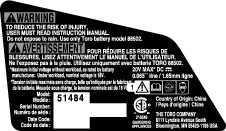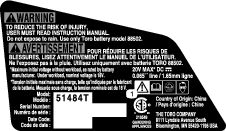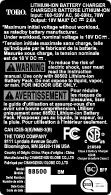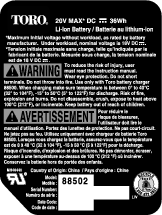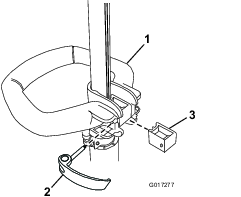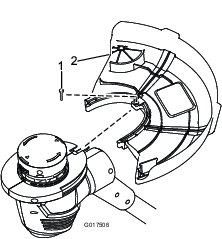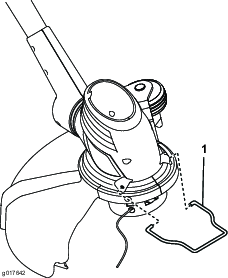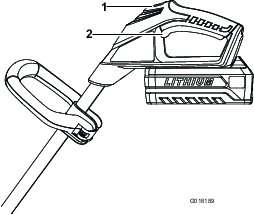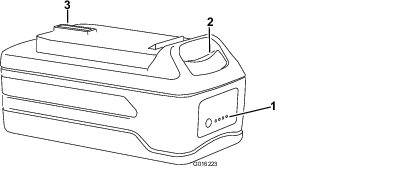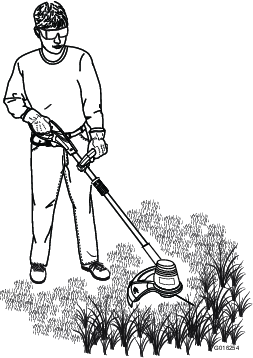Maintenance
After each use of the trimmer, complete the following:
-
Remove the battery from the trimmer.
-
Wipe the trimmer clean with a damp cloth. Do not hose the trimmer down or submerge it in water.
Caution
The line cut-off blade on the deflector is sharp and can cut you.
Do not use your hands to clean the deflector shield and blade.
-
Wipe or scrape clean the cutting head area any time there is an accumulation of debris.
-
Check and tighten all fasteners. If any part is damaged or lost, repair or replace it.
-
Brush debris away from air intake vents on motor housing to prevent the motor from overheating.
Replacing the Spool
Use only 1.65 mm (0.065 inch) diameter monofilament string. Use original manufacturer’s replacement string for best performance (Toro Part No. 88532 or 88524).
Important: Using a larger diameter string will cause the motor to overheat and fail.
-
Remove the battery.
-
Push in the tabs on the side of the spool retainer (Figure 13).
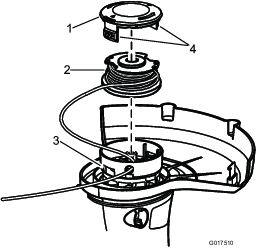
-
Pull the spool retainer up to remove it and remove the spool.
-
To install the new spool, ensure that the string is captured in one of the retaining slots on the new spool. Make sure the end of the string extends approximately 6 inches (152 mm).
-
Install the new spool so that the string aligns with the eyelet in the string head. Thread the string into the eyelet.
-
Pull the string extending from the string head so the string releases from the slot in the spool.
-
Reinstall the spool retainer by depressing tabs into slots and pushing down until spool retainer clicks into place.
Replacing the String
-
Remove the battery.
-
Remove the spool; refer to Replacing the Spool (Figure 13).
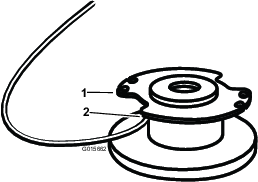
Note: Remove any old string remaining on the spool.
-
The spool accepts up to 4.5 m (15 ft) of string.Use only 1.65 mm (0.065 inch) diameter monofilament string.
Note: Do not use any other gauge or type of string, as this could damage the trimmer.
-
Insert the string into the anchor hole in the upper part of the spool (Figure 14). Wind the string onto the spool in the direction shown by the arrows on the spool.
-
Place the string in the slot on the upper spool flange, leaving about 152 mm 6 inch (6 inches) extended beyond the slot.
Note: Do not overfill. After winding the string, there should be at least 6 mm 1/4 inch (1/4 inch) between the wound string and the outside edge of the spool.
-
Replace the spool and the spool retainer. Refer to Replacing the Spool earlier in this manual.
Preparing the Battery Pack for Recycling
Important: Upon removal, cover the terminals of the battery pack with heavy-duty adhesive tape. Do not attempt to destroy or disassemble the battery pack or remove any of its components. Recycle or properly dispose of lithium-ion battery packs at a battery recycling facility.
 |
For more information on recycling lithium-ion battery packs and to locate the battery recycling facility closest to you, visit www.Call2Recycle.org (US and Canada only). If you are located outside of the US and Canada, please contact your authorized Toro distributor. |

